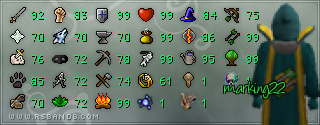Wham94 wrote:
I've got addicted to this 6 sided puzzle. I've had mine for about a month now and I've only started 'Speed Cubing' (as I've heard it called) about a week ago. My time, although not that impressive, is 1min 0.3secs. I love my cube

I've been told i'm addicted, but I don't care. It's amazing. Learning another method soon. F2L, for those who know what that is - no idea what it stands for ^_^
That's great! That's pretty good for a beginner's time.
F2L isn't an entirely new method, it is a STEP within a method. You are learning the Fridrich method, which is the most popular speedcubing method (the world record holder, Erik Akkersdijk, and former world record holder and winner of the World Championships two years ago, Yu Nakajima, both use it.)
The Fridrich method consists of four steps. It has been referred to as "CFOP" to stand for each of these four steps:
1. Cross
2. F2L
3. OLL
4. PLL
1. You already know how to solve the cross, the first step.
2. The second step, F2L, refers to the "First Two Layers" (or "First 2 Layers"). In the beginner's method, you solve the first layer first, then the second layer. In the Fridrich method, you solve the first two layers at the same time, which saves a considerable amount of time. This step is intuitive and is usually learned without memorizing algorithms.
3. The third step is OLL, or Orientation of the Last Layer (the third and final layer). What you basically do in this step is make all the pieces in the last (third) layer all the same color, but not in the right positions. There are a total of 57 algorithms to memorize BUT you can just get by with a mere 7.
4. The final step is PLL, Permutation of the Last Layer. This step basically moves all the correctly oriented pieces around the last layer and solves the cube. There are a total of 21 algorithms to learn. You can get by with 6 or 7, but it's best to learn all 21 (I did. Well 20 actually. 19 if you don't count that one I keep messing up

). After this step, the cube should be solved.
My explanation might be really confusing, so you should watch
this video for a complete rundown of the method, among other basic speedcubing concepts.


































